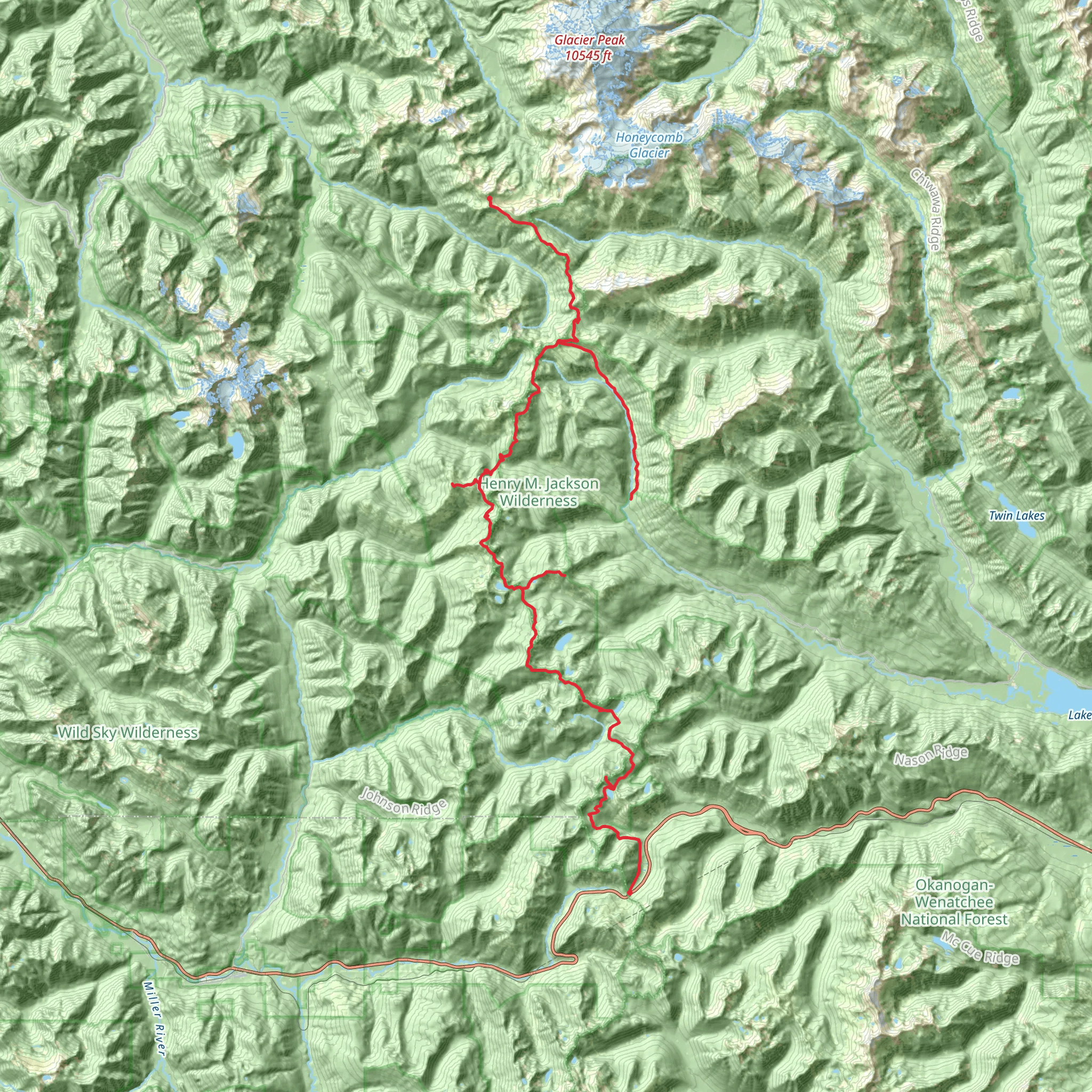Download
Preview
Add to list
More
60.2 km
~4 days
2102 m
Multi-Day
“Trek the Pacific Crest Trail's rugged splendor in Chelan County for a wild, high-elevation adventure.”
Embarking on the Pacific Crest Trail within the Henry M Jackson Wilderness presents an adventure through a diverse and rugged landscape, offering a challenging yet rewarding experience for seasoned hikers. This particular section spans approximately 60 kilometers (about 37 miles) with an elevation gain of around 2100 meters (nearly 6890 feet), showcasing the raw beauty of Chelan County, Washington.Getting to the TrailheadThe trailhead is accessible near Chelan County, and hikers can reach it by car or potentially by public transport, depending on the season and services available. If driving, you would navigate towards Stevens Pass, a well-known landmark in the area, and find parking facilities nearby. For those relying on public transportation, it's essential to check the latest schedules for regional buses that approach the Stevens Pass area, keeping in mind that services may be limited and planning ahead is crucial.Navigating the TrailAs you set out on the trail, you'll be enveloped by dense forests, alpine meadows, and the occasional glimpse of snow-capped peaks. The path is well-marked, but due to its length and remote nature, carrying a reliable navigation tool like HiiKER is advisable to ensure you stay on track and can monitor your progress.Landmarks and Natural FeaturesThe trail will lead you through a variety of landscapes, each with its own unique characteristics. Early on, you'll encounter the enchanting Deception Lakes, a series of alpine lakes that offer a serene setting for a rest or a photo opportunity. As you continue, you'll ascend to Piper Pass, where you'll be treated to panoramic views of the surrounding wilderness.Further along, the trail meanders through the heart of the Henry M Jackson Wilderness, named after the late U.S. Senator Henry M. Jackson in recognition of his environmental advocacy. This area is steeped in history, not only for its political namesake but also for the indigenous peoples who once traversed these lands.Wildlife and FloraThe region is home to a rich array of wildlife, including black bears, mountain goats, and marmots. Birdwatchers may also spot various species such as the gray jay and Clark's nutcracker. The flora is equally diverse, with wildflowers like lupines and Indian paintbrush adding splashes of color to the green tapestry during the blooming season.Preparation and SafetyGiven the trail's difficulty rating and remote nature, it's essential to prepare adequately. This includes packing enough food and water, as well as a water filtration system, since you'll be sourcing water from streams and lakes along the way. Weather conditions can change rapidly, so layered clothing and rain gear are must-haves. Additionally, be bear-aware; carrying bear spray and knowing how to store food properly is vital for your safety and the protection of wildlife.Seasonal ConsiderationsThe best time to hike this section of the Pacific Crest Trail is from late July to early October when the snow has melted, and the trail is most accessible. However, always check current trail conditions and weather forecasts before setting out, as snow and storms can occur outside of these months.Leave No TraceAs with any wilderness experience, adhering to Leave No Trace principles is crucial to preserving the natural beauty and ecological integrity of the area. This means packing out all your trash, being respectful of wildlife, and minimizing your impact on the trail and campsites.By preparing thoroughly and respecting the natural environment, hikers can look forward to an unforgettable journey through the heart of Washington's backcountry, marked by challenging terrain, breathtaking vistas, and a deep connection with the wilderness.
What to expect?
Activity types
Comments and Reviews
User comments, reviews and discussions about the Pacific Crest Trail - Henry M Jackson Wilderness, Washington.
3.8
average rating out of 5
5 rating(s)

